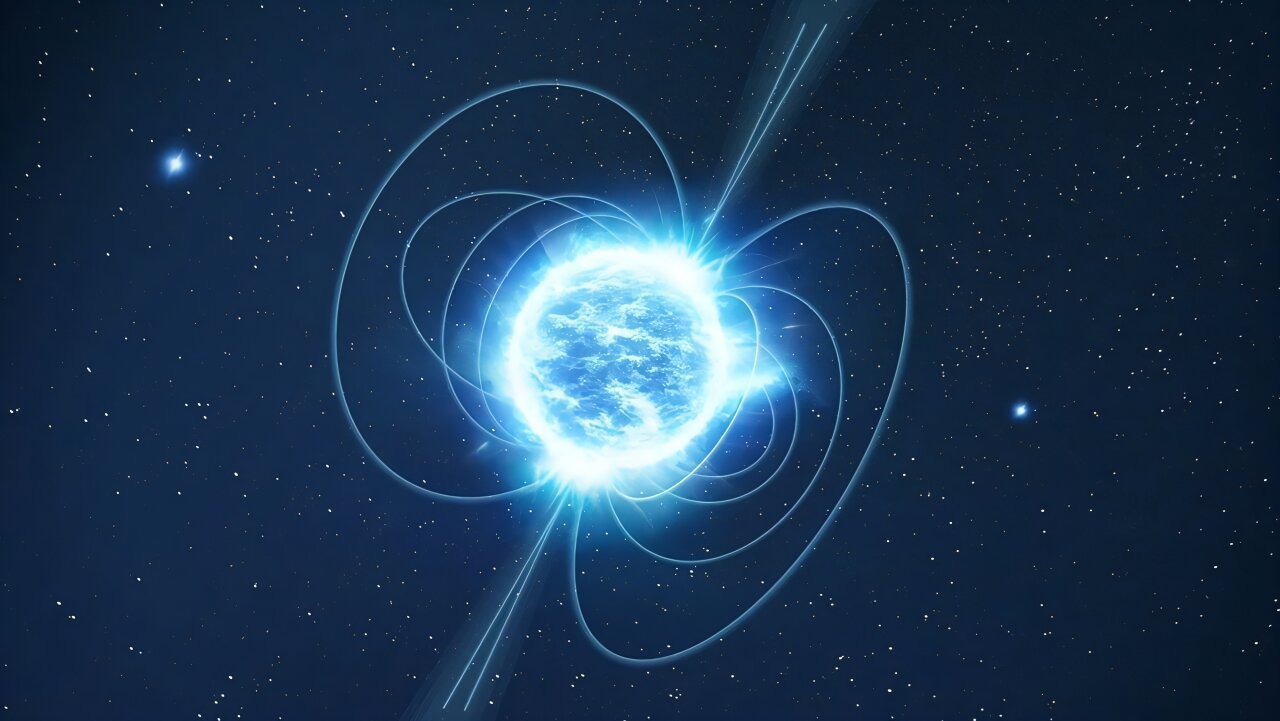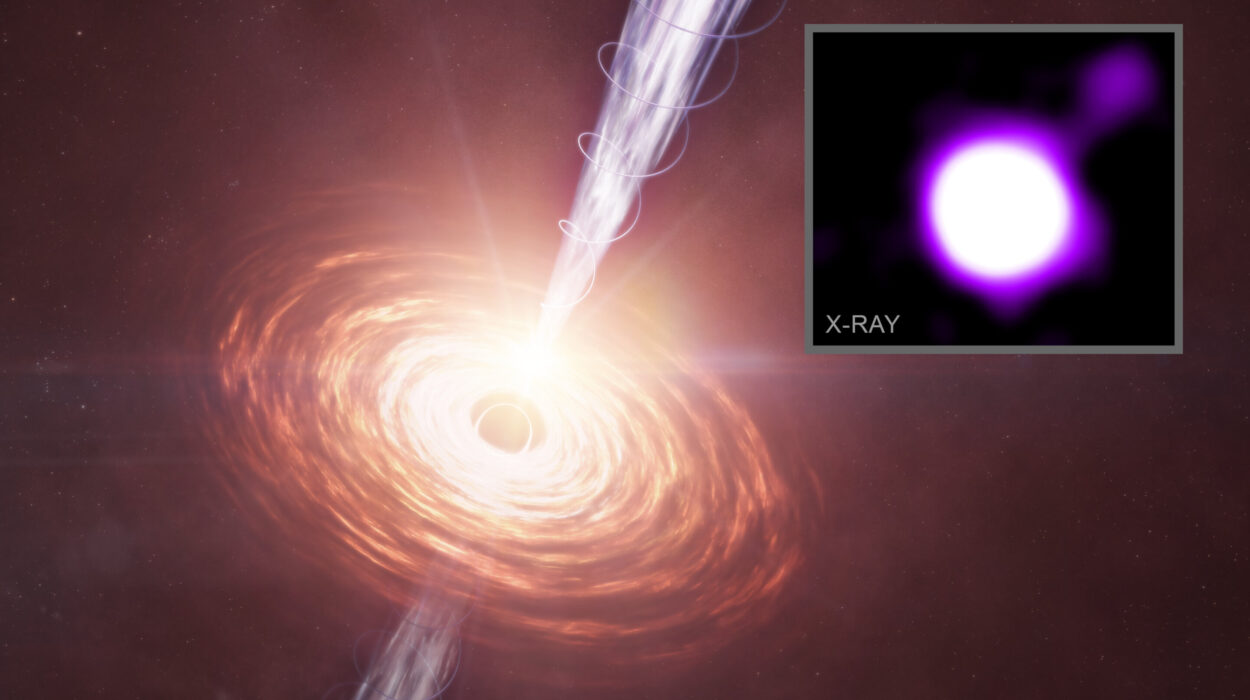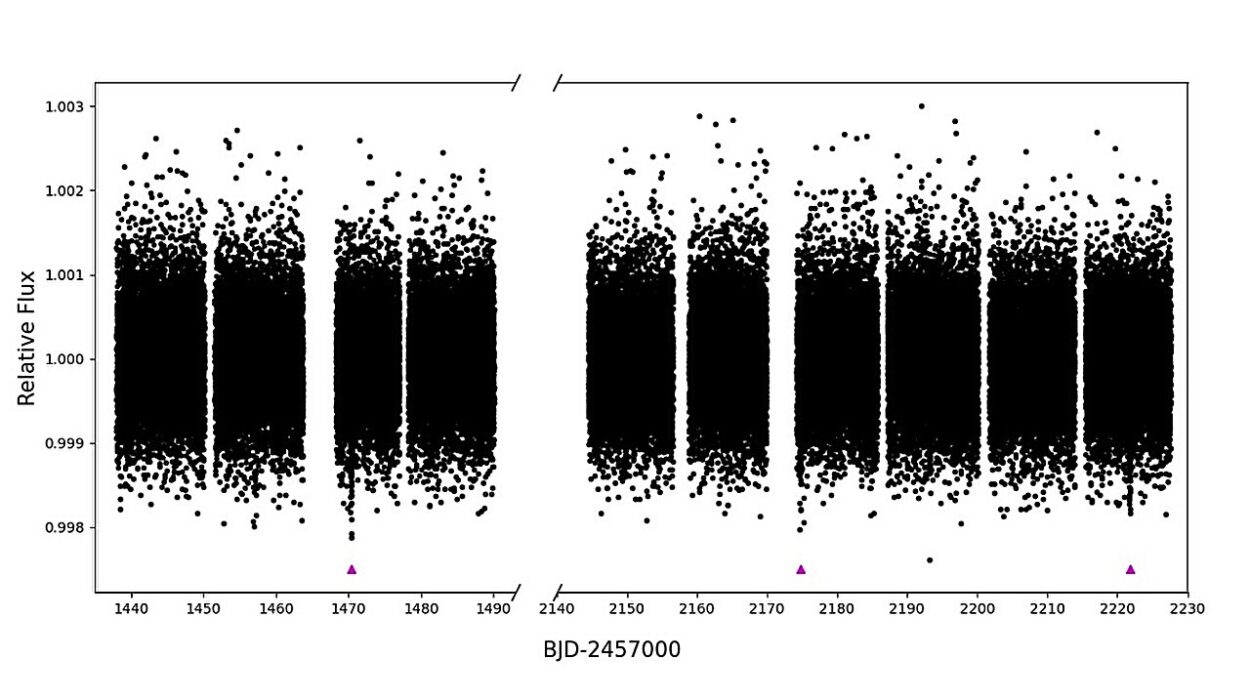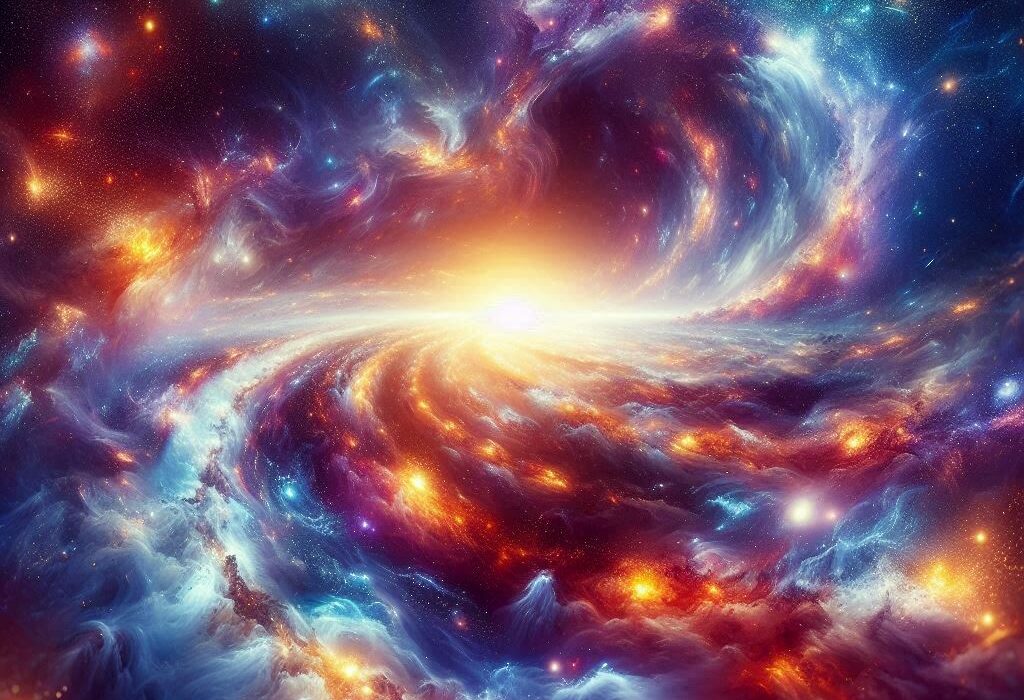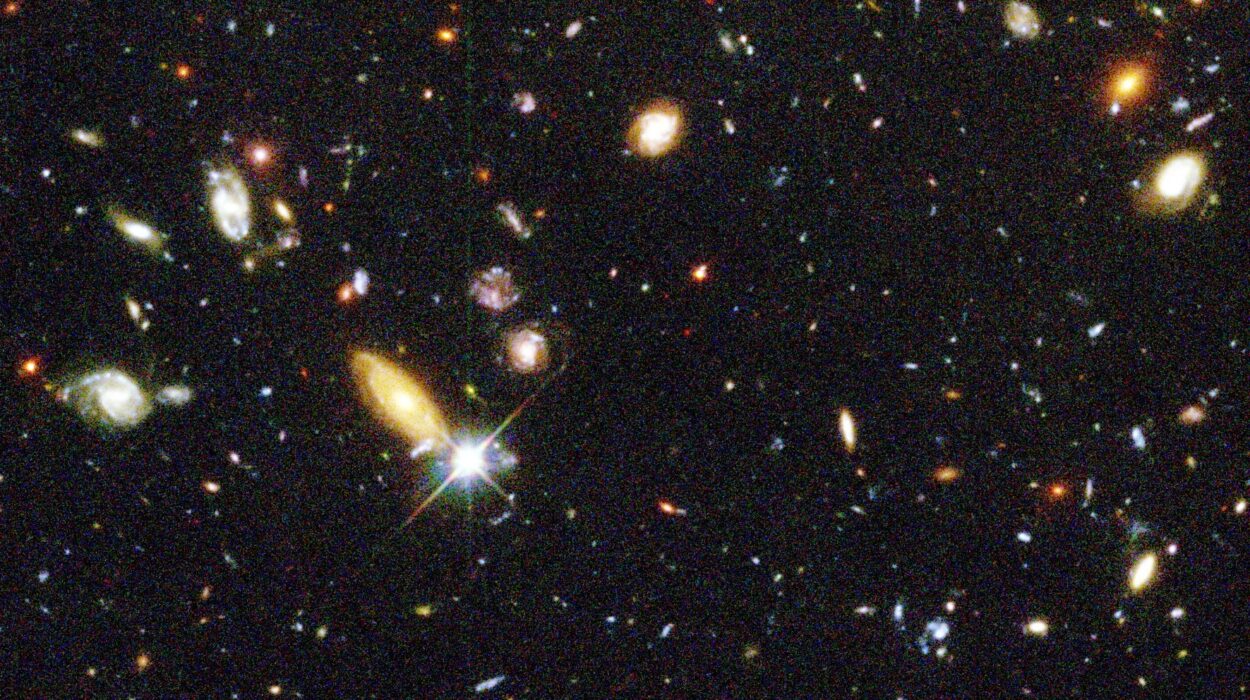In the vast, star-speckled corridors of the Milky Way, certain celestial phenomena remain wrapped in mystery, defying our best models and deepest intuitions. Among the most intriguing are magnetars—ultra-dense, hyper-magnetic remnants of dead stars that, despite being no larger than a city, wield magnetic forces trillions of times stronger than Earth’s. Now, a groundbreaking study led by European Space Agency researcher Ashley Chrimes is revealing startling new clues about one particular magnetar, SGR 0501+4516. With the aid of the Hubble Space Telescope (HST), Chrimes and her team have tracked this stellar phantom as it hurtles through the galaxy, challenging everything astronomers thought they knew about how such objects are born.
SGR 0501+4516: A Galactic Speedster with a Puzzling Past
SGR 0501+4516, often shortened to SGR0501, isn’t just another magnetar. It’s a traveler—slicing through space at a blistering pace of 65 kilometers per second. Its very existence is a puzzle. Typically, magnetars are born from the fiery deaths of massive stars in core-collapse supernovae. These explosions are thought to leave behind neutron stars that, under the right conditions, evolve into magnetars. For years, astronomers believed SGR0501 followed this classic story.
Its position in the sky, tantalizingly close to the known supernova remnant HB9, seemed to fit. SGR0501 was discovered in 2008 after the Swift Observatory caught sudden flashes of gamma rays—emissions typical of magnetars. Given the close angular proximity to HB9, scientists naturally assumed the magnetar must be the leftover core of the same stellar explosion that formed the remnant. But nature, as it turns out, had a twist in store.
The Hubble Trail: Rewriting a Magnetar’s Origin Story
Over more than a decade, the Hubble Space Telescope provided high-precision imaging of SGR0501’s position in the sky. From this treasure trove of data, Chrimes’s team was able to measure the magnetar’s proper motion—its apparent drift against the celestial background. The results were astonishing. The direction and speed of its travel didn’t point back to HB9. Instead, it veered off course, suggesting that SGR0501 had nothing to do with the nearby supernova remnant.
This was a seismic shift in thinking. “Our definite conclusion is that SGR0501 did not originate in HB9,” said Chrimes. “However, since there is no other clear birth site or smoking gun for a different origin, the alternatives are all plausible and we can’t yet say which is the most likely.”
This left a gaping question: if not from HB9, then where? And more importantly—how?
Magnetars: Compact Chaos with Magnetic Fury
To grasp the importance of the discovery, one must understand just how exotic magnetars are. These cosmic beasts are a subclass of neutron stars, which themselves are already bizarre: remnants of stellar cores crushed so densely that a teaspoon of their matter would weigh as much as a mountain. But magnetars go a step further. Their magnetic fields are the strongest known in the universe—up to 1,000 times more powerful than that of a typical neutron star.
If one were to pass near Earth at the distance of the moon, its magnetic field could disrupt our electronic infrastructure and wipe digital storage devices clean. Of course, we are in no real danger—SGR0501 lies safely about 6,520 light-years away. Yet its magnetic personality makes it a compelling subject for astronomers hunting clues about high-energy astrophysical phenomena.
A Magnetar Without a Supernova? Strange But Possible
The decoupling of SGR0501 from a supernova origin forced astronomers to consider alternative formation theories—radical by traditional standards. One plausible idea: a magnetar can be formed when two neutron stars—small but massive—collide and merge. Such a merger would create a larger, extremely magnetic neutron star, possibly explaining SGR0501’s characteristics.
The other possibility is even more unusual: accretion-induced collapse. In this scenario, a white dwarf—a smaller stellar remnant—exists in a binary star system. Over time, it greedily siphons material from its companion star. Normally, such a buildup ends in a catastrophic thermonuclear supernova. But under certain conditions, the white dwarf might collapse into a neutron star without exploding—an astrophysical vanishing act that leaves behind a magnetar like SGR0501.
“Normally, this scenario leads to the ignition of nuclear reactions, and the white dwarf exploding, leaving nothing behind,” explained co-investigator Andrew Levan of Radboud University and the University of Warwick. “But it has been theorized that under certain conditions, the white dwarf can instead collapse into a neutron star. We think this might be how SGR0501 was born.”
The Fast Radio Burst Connection: A New Puzzle Piece
The mystery of magnetar origins dovetails neatly with another enigmatic phenomenon captivating astronomers: fast radio bursts (FRBs). These ultra-brief but intense flashes of radio waves come from deep space, some from distant galaxies, others from within our own. For years, the source of FRBs has eluded scientists. But magnetars—especially young, volatile ones—have emerged as prime suspects.
Magnetars formed via exotic processes such as mergers or accretion-induced collapse could provide exactly the kind of high-energy, short-duration emissions that characterize FRBs. This is especially important when FRBs are detected in older galactic regions, where no massive stars remain to die in supernova explosions. SGR0501 could be a prototype—an emissary from a class of objects responsible for at least some of the FRBs recorded by Earth-based telescopes.
“Magnetar birth rates and formation scenarios are among the most pressing questions in high-energy astrophysics,” said Nanda Rea of the Institute of Space Sciences in Barcelona, “with implications for many of the universe’s most powerful transient events, such as gamma-ray bursts, super-luminous supernovae, and fast radio bursts.”
The Broader Implications: Rethinking Stellar Evolution
The discovery that SGR0501 may not have come from a supernova has broader consequences for astrophysics. It forces scientists to revisit the so-called “stellar graveyard”—the catalog of objects formed when stars die. Until recently, core-collapse supernovae were considered the only nursery for magnetars. Now, astronomers must reckon with the idea that multiple evolutionary roads may lead to the same extraordinary destination.
This also affects population models. Only about 30 magnetars are known in our galaxy, but if non-supernova processes can produce them, there could be more out there—hidden, unassociated with obvious stellar remnants, and quietly traversing the galaxy. The team’s future work, leveraging Hubble and potentially the James Webb Space Telescope (JWST), aims to find more of these unanchored magnetars and refine our understanding of their life stories.
A Final Frontier of Stellar Forensics
SGR0501 is more than just an astrophysical curiosity—it’s a symbol of how much we still don’t know about the life cycles of stars. The fact that a neutron star with such a ferocious magnetic field could exist without a clear supernova past hints at complex stellar dynamics we have only begun to understand. The rogue magnetar isn’t just traveling across the galaxy; it’s blazing a trail into uncharted scientific territory.
Thanks to Chrimes and her team’s meticulous tracking and imaginative interpretation, we now have a new cosmic mystery to pursue—one that bridges the strange world of magnetars, the fleeting brilliance of fast radio bursts, and the evolving theory of how stars die and transform.
And as the magnetar sails on through the Milky Way, defying assumptions and rewriting rules, it leaves us with one compelling message: even the smallest and strangest stars can cast the longest shadows across our understanding of the universe.
Reference: A. A. Chrimes et al, The infrared counterpart and proper motion of magnetar SGR0501+4516, arXiv (2025). DOI: 10.48550/arxiv.2504.08892
